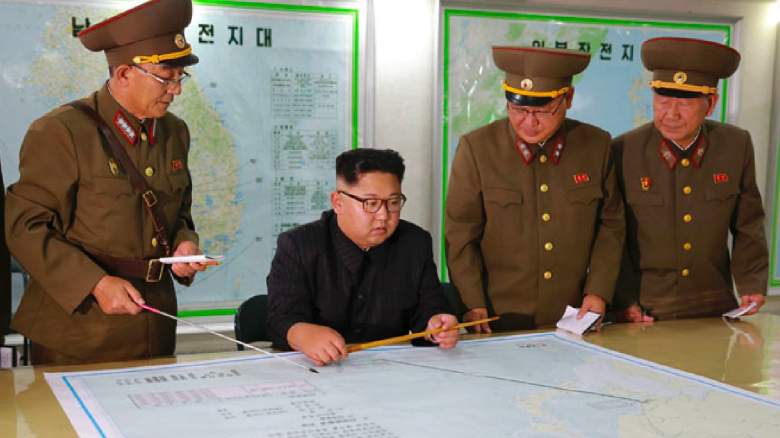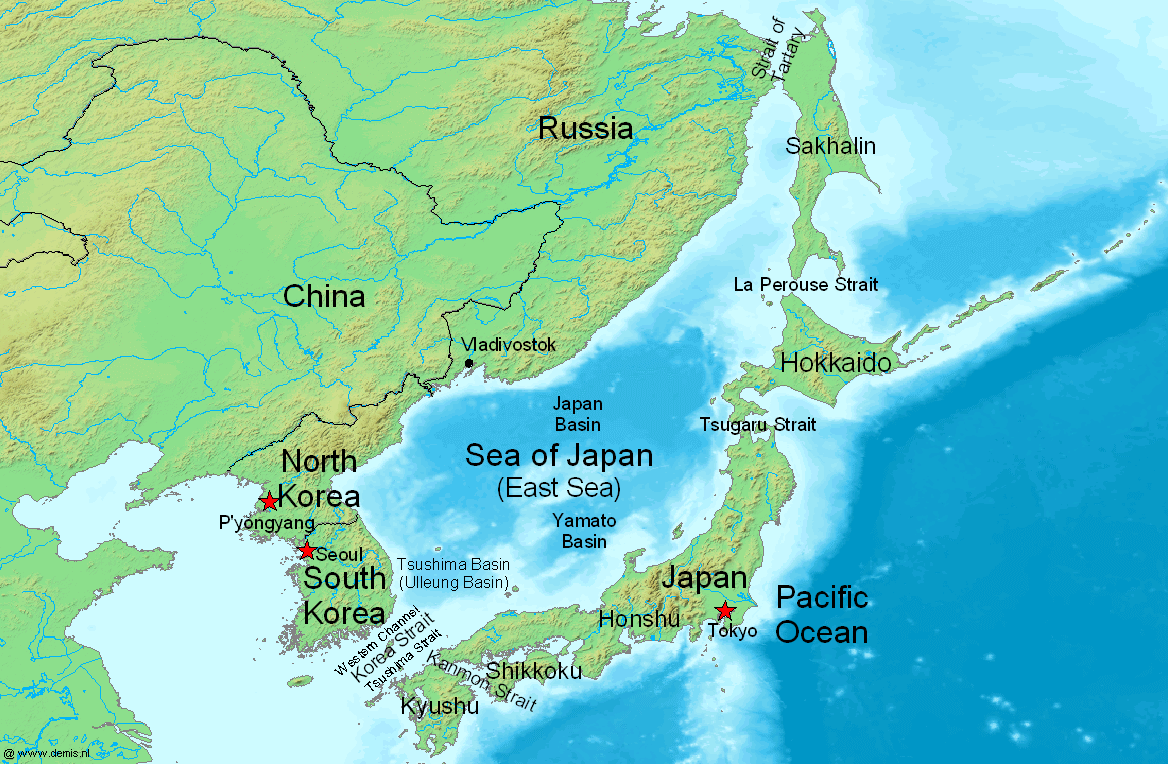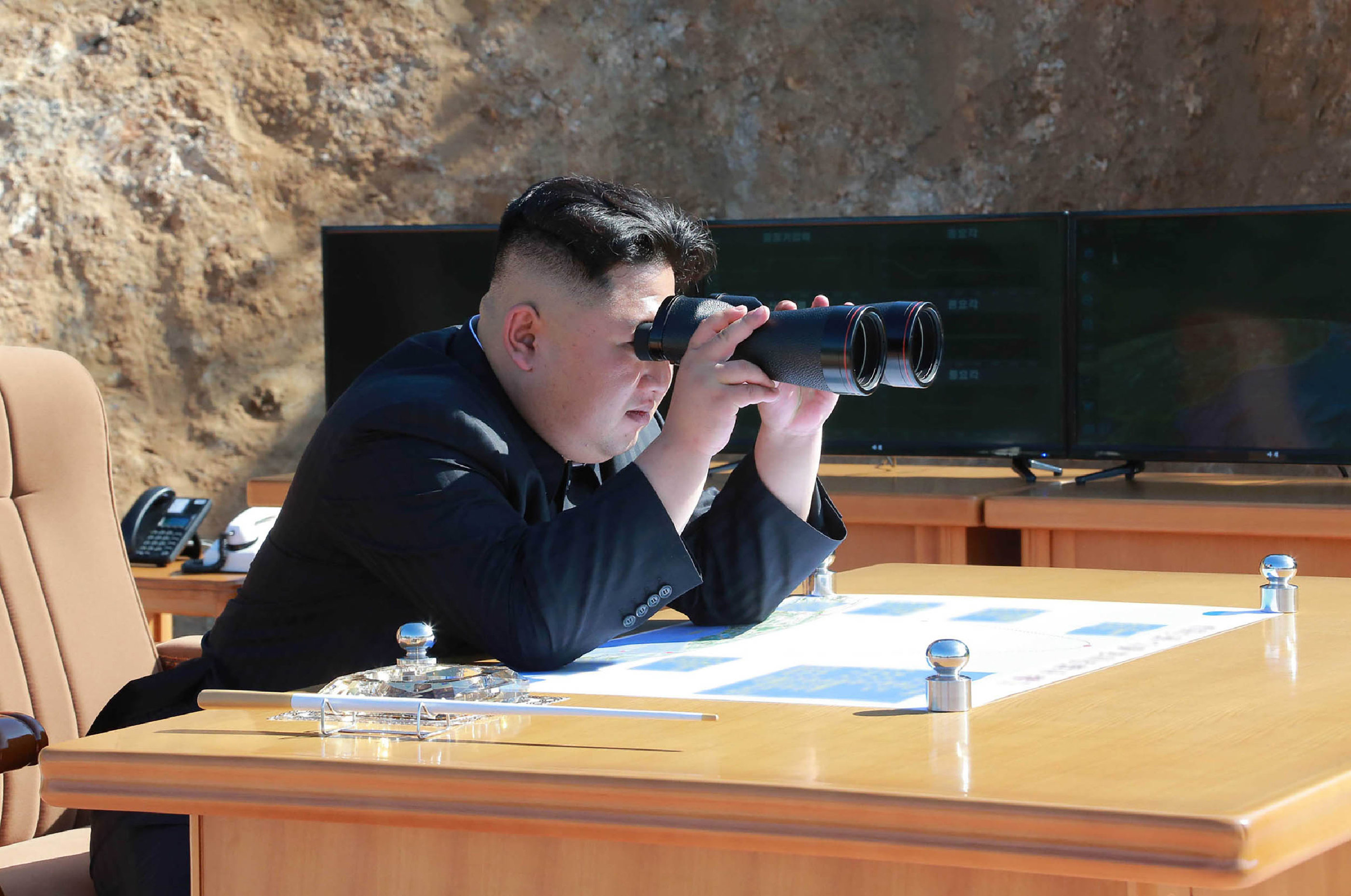
North Korea conducted a test of a hydrogen bomb on Sunday that can fit on an intercontinental ballistic missile.
“North Korea tested a hydrogen bomb at noon on September 3rd and succeeded totally,” according to an announcement on state television. “The H-bomb test was carried out to examine and confirm the accuracy and credibility … of [an] H-bomb to be placed in the payload of the [intercontinental ballistic missile].”
The White House said in a statement that President Donald Trump’s national security team will meet on Sunday to discuss the situation.
“The national security team is monitoring this closely. The President and his national security team will have a meeting to discuss further later today. We will provide updates as necessary,” said White House Press Secretary Sarah Huckabee Sanders.
Here’s what you need to know:
1. The Test Registered as a 6.3 Magnitude Earthquake

A map of the Sea of Japan.
The U.S. Geological Survey said it recorded a 6.3 magnitude earthquake in North Korea on Sunday.
The tremors were centered in the North Hamgyong province, where North Korea is known to have a nuclear test site, according to The Economist. The quake was felt in parts of China, Russia and South Korea.
2. This Latest Test Was Much Larger Than Previous Nuclear Tests Conducted by North Korea
“The event seems to have been larger than the one our system recorded in September last year and the location is very similar to that event,” according to the Austria-based Comprehensive Nuclear-Test-Ban Treaty Organization.
“If confirmed as a nuclear test, this act would indicate that the DPRK’s nuclear programme is advancing rapidly,” CTBTO Executive Secretary Lassina Zerbo said in a statement.
NORSAR, a Norwegian seismological observatory, said the explosive yield measured 120 kilotons TNT.
“In comparison, the explosive yield of the nuclear bomb dropped on Hiroshima on 6 August 1945 was estimated at 15 kilotons TNT, while the bomb dropped on Nagasaki three days later was 20 kilotons TNT,” NORSAR said in a statement.
3. President Trump Tweeted About the Nuclear Test on Sunday Morning
President Donald Trump took to Twitter on Sunday morning to condemn North Korea for conducting the nuclear test, saying it was “very hostile and dangerous” to the United States.
On Aug. 9, Trump said the United States would respond with “fire and fury” if North Korea continued to advance its nuclear weapons system.
4. This Is the Sixth Nuclear Test Conducted by North Korea Since 2006
Sunday’s test was the sixth nuclear test conducted by the rogue nation. North Korea has conducted various nuclear tests over the past decade. It’s first test was in 2006, according to ABC News, followed by tests in 2009, 2013 and two tests in 2016.
This is the first nuclear test conducted while Donald Trump has been president.
5. North Korea Conducted a Long-Range Ballistic Missile Test in July

This picture taken and released on July 4, 2017 by North Korea’s official Korean Central News Agency shows North Korean leader Kim Jong-Un inspecting the test-fire of intercontinental ballistic missile Hwasong-14 at an undisclosed location. STR/AFP/Getty Images
On July 28, North Korea conducted a test launch of an intercontinental ballistic missile that landed off the coast of Japan.
“North Korea’s test launch today of another intercontinental ballistic missile — the second such test in less than a month — is only the latest reckless and dangerous action by the North Korean regime. The United States condemns this test and rejects the regime’s claim that these tests—and these weapons—ensure North Korea’s security. In reality, they have the opposite effect,” Trump said in a statement after the test. “By threatening the world, these weapons and tests further isolate North Korea, weaken its economy, and deprive its people. The United States will take all necessary steps to ensure the security of the American homeland and protect our allies in the region.”
And earlier this month, North Korean leader Kim Jong Un threatened to launch a strike against the Pacific island of Guam, but later backed off that threat.

